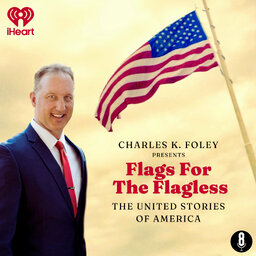A Symbol of Connection
Charley recounts the tale of a unique flag that traveled across the country to bring healing to two communities devastated by similar tragedies. He reflects on Joanne Thompson's extraordinary efforts to deliver this simple yet powerful symbol, aimed at restoring shattered spirits and fostering enduring bonds of compassion.
Join our group on Facebook - Flags for the Flagless
https://www.facebook.com/flagsfortheflagless/
 Flags for the Flagless
Flags for the Flagless


